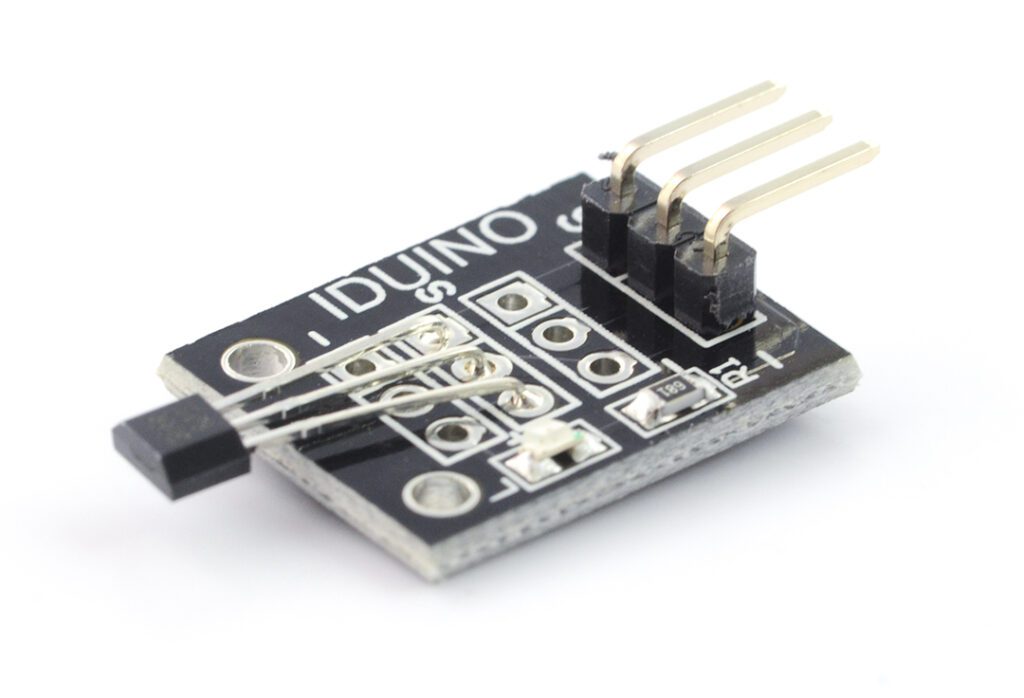Table of Contents:
Do you know what smartphone navigation, contactless payments and MRI, a life-saving medical imaging technology, have in common?
The answer lies in the invisible world of magnetic fields and the sensors that detect them.
These fascinating forces surround us everywhere – from the Earth’s natural magnetic field, which guides the compass, to the complex systems used in advanced technology.
The magnetic field sensor, a key component of many devices, allows us to interact with this hidden dimension.
Find out what specifically this small component is, how it works and where you can successfully use it.
How was the magnetic field sensor developed?
Origins magnetic field sensor date back to the late 19th century, when American physicistEdwin Herbert Hall discovered the phenomenon that still bears his name – the Hall effect.
In 1879, during his experiments at Johns Hopkins University, Hall noticed that when an electric current flows through a conductor placed in a transverse magnetic field, a voltage is generated at the edges of the conductor, perpendicular to the direction of current flow.
This discovery was groundbreaking because it proved for the first time that a magnetic field could affect the flow of current in a material, opening up new possibilities in the study of magnetism and electricity.
The Hall effect quickly found practical application, leading to the development of the first magnetic field sensors.
These devices were able not only to detect the presence of a magnetic field, but also to measure its strength and direction.
The development of semiconductor technology in the 20th century further contributed to the miniaturization and improved performance of these sensors, making them extremely useful in many fields of technology.
Since then, Hall effect-based sensors have become the foundation for many advanced applications.
What is a magnetic field sensor and how does it work?
Magnetic field sensor is a device used to detect and quantify magnetic fields.
Its operation is based on the aforementioned Hall effect, which involves generating a transverse voltage in a conductor or semiconductor through which an electric current flows when it is placed in a transverse magnetic field.
The voltage is perpendicular to the direction of current flow and to the direction of the applied magnetic field, and is proportional to the intensity of the field.
In practice, when a semiconductor wafer is in the presence of a magnetic field and a current flows through it, electrons in the material are deflected due to the Lorentz force, leading to a Hall voltage at the edges of the wafer.
The value of this voltage is a measure of the strength of the acting magnetic field.
Other types of sensors related to the magnetic field are magnetoinductive sensors, which use electromagnetic induction to detect changes in the magnetic field, and SQUID (Superconducting Quantum Interference Device), which are extremely sensitive and used mainly in scientific research.
Where is the magnetic field sensor used?
Magnetic field sensors are very popular components today, eagerly used not only in the form of ready-made modules in electronic projects, where they are combined with Arduino boards, for example.
The described sensor is also widely used in many other areas, such as:
1. industrial automation and robotics
In industry, the magnetic field sensor can be used to precisely monitor the position, movement and speed of machine components or robots.
With it, automation systems can precisely control production processes.
2. consumer electronics
Mobile devices such as smartphones and tablets often use magnetic field sensors as digital compasses.
They allow them to determine geographic direction, which is crucial in navigation applications, for example.
3. motorization
In the automotive industry, these sensors are used for shaft position monitoring, wheel speed detection and as components of safety systems such as ABS.
Their use contributes to driving efficiency, safety and comfort.
4. medicine and diagnostics
In medicine, magnetic field sensors play a key role in advanced imaging systems such as magnetic resonance imaging (MRI).
They allow the creation of detailed images of the inside of the body, which is invaluable for diagnosis and treatment planning.
5. geophysics and exploration
Magnetic field sensors are used in geophysics to study the Earth’s structure and detect mineral deposits.
They make it possible to map geological formations and are essential in the search for natural resources.
6 Security and access control
In access control systems such as electronic door locks, Hall sensors are used to detect the position of magnets, enabling keyless opening and closing.
Their reliability and durability make them ideal for systems that require a high level of security.
How do technological developments affect magnetic field sensors?
As science and technology evolve, magnetic field sensors are undergoing an evolution, becoming smaller, more sensitive and energy efficient.
Miniaturization is making it possible to integrate these sensors with microcontrollers and other electronic components, opening the door to new applications, from wearable electronics to intelligent transportation systems.
A key trend is also the development of sensor materials and technologies, such as graphene, which, due to its unique properties, is finding applications in the production of ultra-sensitive magnetic field sensors.
These innovations greatly expand the application possibilities of these devices, offering not only higher precision measurements, but also new functionalities.
How useful was this post?
Click on a star to rate it!
Average rating 0 / 5. Vote count: 0
No votes so far! Be the first to rate this post.




















